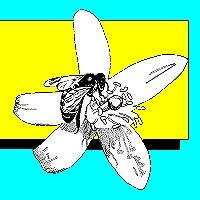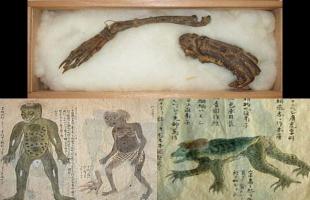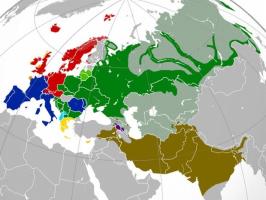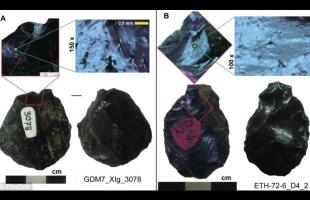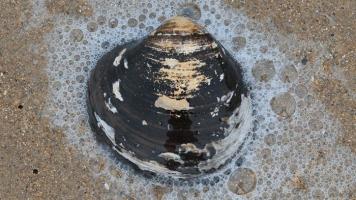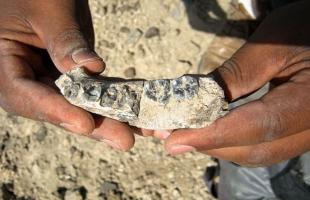APIS Volume 14, Number 10 October 1996

In this issue
Focus on the National Honey Board--Third Referenda Passes
Essential Oils in Mite Control--A Paradigm Shift in Extension Information Delivery
Integrated Pest Management for Varroa
Conserving Honey Bee Diversity
FOCUS ON THE NATIONAL HONEY BOARD--THIRD REFERENDA PASSES
b The National Honey Board has been continued, approved by 82 percent of those voting in August. The Honey Research, Promotion and Consumer Information Act was enacted in 1986 (see July 1986 APIS); this is its second renewal by referendum. For a summary of the Board's activities and mandates see the Official National Honey Board Handbook (July 1996 APIS). Also look at its self-evaluation (February 1995 APIS). The honey bibliography (March 1995 APIS) and the Board's Pride Program on maintaining honey quality (August 1992 APIS) are two of many projects designed to help beekeepers in their packing and selling efforts. Another ambitious project is an effort to define one of nature's most variable substances, honey (November 1993 APIS).
The winter 1996 National Honey Board Newsletter outlines goals for 1996:
- To increase the volume of honey used at retail by 5 percent (Neilsen/Packer Study).
- To maintain honey's image as a healthful and good-for-you product.
- The increase use of honey by families (household members three or more) by an average of five index points while maintaining usage by seniors.
- To increase consumer mention/identification of honey as an ingredient from 75 percent to 81 percent by 1997, while maintaining use as a spread and a topping.
- To increase consumer confidence in knowledge of buying, storing and using honey from 77 percent to 80 percent by 1997.
A rash of new initiatives by the Board to accomplish the above goals include a "Honey, Can You Squeeze Me Into Your Files?" file folder and a "What's Cookin' Honey?" recipe contest sponsored by Redbook (see October 1996 issue of that publication for details). The Board has also released a catalog of 26 for- sale items that beekeepers and others can use to promote honey, including a technical brochure, fact sheets, recipes and videos.
The newest video offering is summarized in a three-minute production titled "It's a Beehive of Videos." This product provides glimpses of seven longer videos that came out of the Board's sales seminar held December 1995 in Minneapolis. Topics include business changes in the '90s, honey consumers in the '90s, how honey adds value, how to pick winning promotions, profiting from low-cost promotions, exporting, and how profitable commercial beekeeping really is. Each of the above is available for loan/purchase. I reported on this seminar in the January and February 1996 issues of The Speedy Bee.
Another initiative by the Board dedicated to the more technically oriented foodservice industry is the Honey Hotline. This is a spinoff of its Food Technology/Product Research Program and includes a quarterly report on use of honey in many areas. Topics addressed in the past have been honey use in potato chips, peanut butter and beer brewing (see April 1994 APIS). The array of microorganisms associated with honey as well as its effect on the four basic human tastes (sweet, sour, bitter, salt) have also been described. The hotline can be queried directly using a toll-free number (800/356-5941), fax (415/340-8568) or e-mail (74512.2455@compuserve.com). To contact the Board itself for further information to request products or get on its mailing list, call 800/553-7162 or fax 303/776-1177.
ESSENTIAL OILS IN MITE CONTROL -- A PARADIGM SHIFT IN EXTENSION INFORMATION DELIVERY?
The digital information age is changing the way we view and do things. This has been well shown in the format of this newsletter as it metamorphosed from a paper to an electronic document on the Internet (December 1995 APIS). One pundit says it is nothing short of redefining what we know and how we know it.
The Cooperative Extension Service, the outfit I work for that publishes this newsletter, is in the information-providing business. It focuses on freely distributing knowledge and putting it to work in people's lives (June 1996 APIS). The quality and objectivity of the information coming from Extension has been controlled by its link to scientific investigation and institutional review. The question of how "scientific" something is has traditionally been based on whether it can be published in journals with this kind of focus. The democratization force of the information revolution, however, means that anyone can easily and quickly publish ideas for all to see and evaluate with fewer restrictions than in the past.
A case in point is a report published in the September 1996 issue of American Bee Journal (Vol. 136, No. 9), pp. 652-654. Introduced as "...a brief account of our work and preliminary finding during the past year," this work describing the use of essential oils to control the Varroa bee mite has raised a few eyebrows in scientific circles. It is not clear to many that the article is rigorous enough (i.e. uses adequate controls) for publication in a scientific journal. Nevertheless, a look at many published reports over the years in the bee journals might merit similar response.
What is not apparent from the article as published is that it also was placed on the World Wide Web ( http://www.wvu.edu/~agexten/varroa.htm), where it generated huge interest and appeared to result in widespread unequivocal acceptance from many members of the Bee-L and other electronic discussion lists. The result of this information being so quickly and readily available via electronic media, and the positive response it generated, was a note I received from a colleague:
"I feel that you and I are witnessing the first beekeeping paradigm shift in information development and delivery. The World Wide Web has so firmly entrenched the concept of essential oils as a control for mites that it has made science irrelevant.
"(1) If the stuff doesn't work, beekeepers will know it before scientists, or if the stuff works, beekeepers will know it before scientists. They're all trying it now.
"(2) If the stuff works/doesn't work, beekeepers will know it before extension has an opportunity to extend science. The information has long since been on the net/web.
"It appears that if you have a large number of lay people doing various things (e.g. playing with essential oils) over a period of time, the correct solution will rise to the top. In a contorted way, research is being accomplished without bench scientists. By using the World Wide Web, extension is being accomplished without using traditional extension systems. He concludes with "power to the people."
We can quibble with some of the wording. Science itself, for example, is not necessarily made irrelevant, rather the knowledge development and distribution process is rapidly changing. Whether this will result in the "correct" solution is also debatable. The essence of the remarks remain nonetheless, and brings to mind the process of rapid adoption of other technologies, like grease patties, by beekeepers (see December 1995 APIS).
For providers and consumers both, the information revolution has advantages. But it also carries risks. The traditional extension information delivery system, for example, could be mostly relied upon in the past for being objective and having a scientific basis. Rapid, easily-produced information on everything from essential oils for Varroa mite control to use of hormones in people (melatonin), however, means judging the quality of that delivered electronically becomes more and more the responsibility of the receiver.
INTEGRATED PEST MANAGEMENT FOR VARROA
In keeping with the essential oils theme, the person doing a good deal of research in this area, Dr. Nicholas Calderone, formerly part of Dr. H. Shimanki's Beltsville research team and now on the faculty of Cornell University has provided some insight. A synopsis of his work presented to the Canadian Association of Professional Apiculturists (Hive Lights, Canadian Honey Council, May 1996) was republished in The Speedy Bee (July 1996, Vol. 25, No. 7, pp. 1-2). The emphasis of his remarks was not on oils, however, but on using Integrated Pest Management (IPM), which uses both chemical and non-chemical means to control Varroa.
Dr. Calderone's IPM strategy is to use a mix of methodologies to control Varroa populations. One is the use of what he calls "natural products" many of which can be called "oils." These include tymol, eucalyptus, camphor and menthol. Research using this treatment showed good results in the fall, when most mites were on adult bees and little brood was present. When more brood was present, however, the treatment didn't work as well, although it still had some effect. The difference in amount and kind of brood, depending on the season of the year, is always a key issue in Varroa control (see October 1994 APIS).
Two other methods used in conjunction with the natural products suggested by Dr. Calderone are mechanical. The first is the use of sticky boards. It seems that mites naturally fall off bees all the time and can return, unless they are physically trapped (stuck) on the boards. The final control measure is trapping mites in drone brood. In this method, drone foundation is inserted into the brood nest. When drawn out and populated with drone brood, the comb is removed and destroyed along with the mites that are trapped inside the sealed cells.
According to an article in Bee Science (Vol. 4, No. 1, 1996, pp 1-13 ), "Bio-technical manipulations used in Vietnam to control Varroa jacobsoni and Tropilaelaps clareae in colonies of Apis mellifera," the latter method listed by Dr. Calderone is used when no chemical use is possible either because of cultural or economic reasons. In Vietnam, for example, corners of worker comb are cut off or empty frames are placed into colonies. When these are drawn out and populated with drone brood (preferred by Varroa over worker brood), they are removed and destroyed. In a variation of this technique, destruction of brood in conjunction with new queen introduction to provide a break in the brood cycle is also practiced.
Whether using essential natural products, essential oils, pesticides or mechanical control methods, The IPM principles discussed by Dr. Calderone above should always be kept in mind. This is especially true for chemicals. Employing any such substance exclusively and/or to excess for Varroa control may lead to resistance and subsequent loss of the material as an effective control agent (see November 1994 and February 1995 APIS). A key ingredient in most IPM programs is sampling bee populations to determine the number of mites present. Only when this number exceeds a certain level is it generally considered wise to employ control measures (see October 1989 and February 1993 APIS). This is further complicated, however, by possible rapid reinfestation from nearby untreated apiaries (see March 1993 APIS).
CONSERVING HONEY BEE DIVERSITY
There's been a lot of press recently on loss of biodiversity. Mostly this has to do with native plants and animals in the tropics, but it is also true for pollinators in more temperate areas (see June 1996 APIS). A major concern in Europe, according to Tom Robinson writing in Bee World (Vol. 76, No. 4, p. 213), is how to conserve the socalled dark honey bee (Apis mellifera mellifera). This is in response to almost total elimination of this insect from beekeeping operations. It has been replaced by more docile, and thought to be more productive, southern races like the Italian bee (Apis mellifera ligustica). The author says that elimination of this "tough bee" that can survive harsh conditions almost to the Arctic Circle could have repercussions in the future. He concludes that this is another instance where what has taken nature thousands of years, humanity has virtually destroyed in less than century.
Retaining the dark bee could also prove valuable in the New World. It is thought by some that this race has been one of the most effective in holding its own in the face of invasion by the African bee (Apis mellifera scutellata), especially at higher elevations. Unfortunately, the coming of Varroa makes the task of conserving any race of bees far more difficult. Ironically, it puts the onus squarely on the shoulders of those who introduced the parasite in the first place, the beekeeping public (see April 1996 APIS).
Malcolm T. Sanford
Bldg 970, Box 110620
University of Florida
Gainesville, FL 32611-0620
Phone (904) 392-1801, Ext. 143 FAX: 904-392-0190
http://www.ifas.ufl.edu/~entweb/apis/apis.htm
INTERNET Address: MTS@GNV.IFAS.UFL.EDU
©1996 M.T. Sanford "All Rights Reserved








